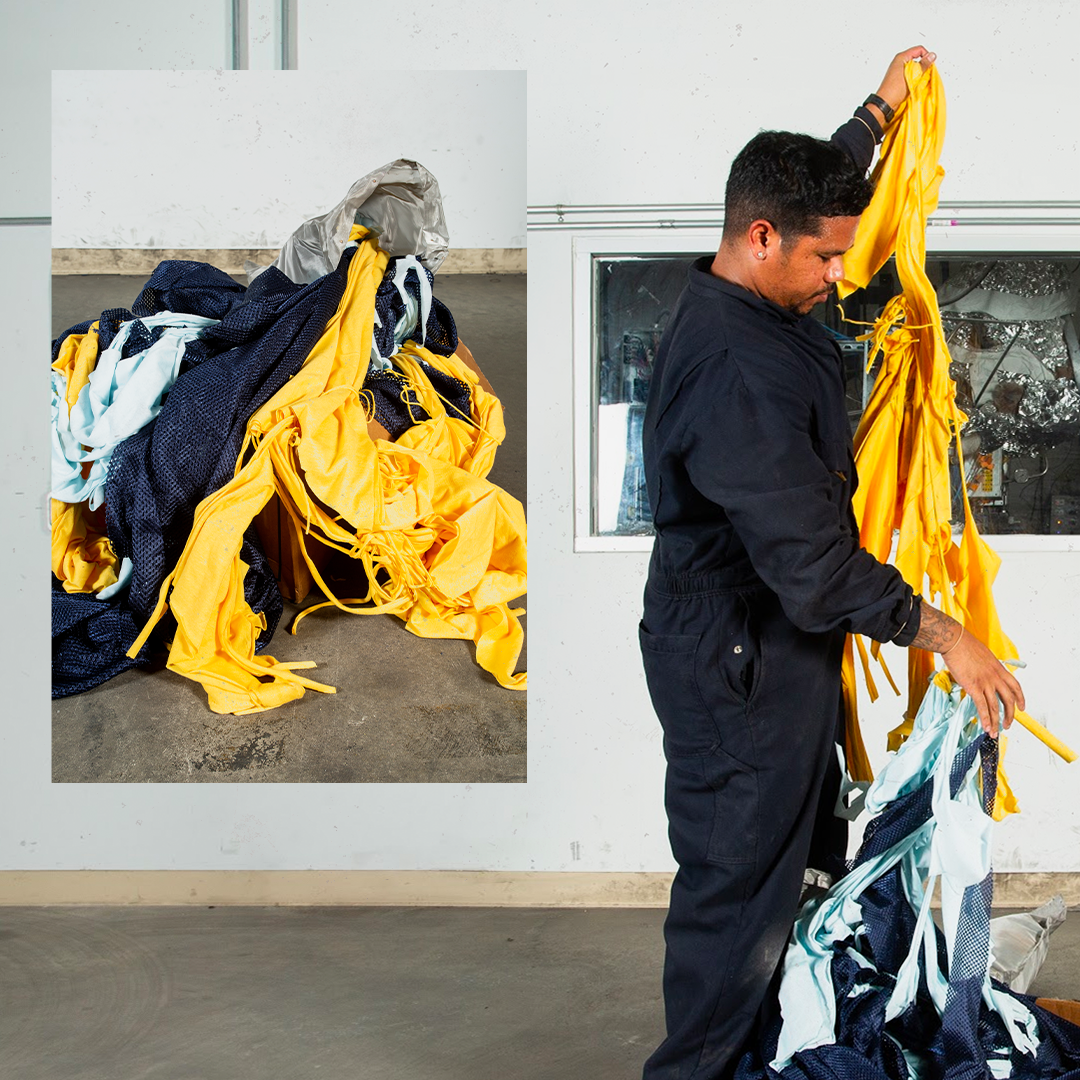Rather than being extractive or unidirectional, they usually work together in regenerative cycles. The Ambercycle ecosystem follows this same model to bring harmony between society and the materials we use.
Synthetic textiles possess attributes such as durability and longevity, and we can break them down and build them back up at the molecular level in ways that we really can’t with natural fibers. These attributes are harmful when synthetic materials have short lifespans and are sent to the landfill or environment.
However, synthetics excel when they are responsibly kept above ground and in circulation. The durability of the molecules allows for infinite regeneration.
This eliminates the need to extract raw resources from the earth and to send valuable materials to the landfill. We already have all the material we need above ground, let’s learn together how to live harmoniously with it in a healthy ecosystem.
The Ambercycle ecosystem entails:1. Collection of landfill-destined textiles
2. Preprocessing for regeneration (sorting and cutting / shredding)
3. Ambercycling
4. Spinning new yarns
5. Integrating regenerated materials back into supply chains
6. Creating pathways for this process to happen infinitely
Purifying them back to their original state and ensuring their high quality has been difficult to date, leaving a vast majority of these items unrecyclable and without use. Through chemistry, Ambercycle regenerates at a molecular level which allows us to purify high-quality materials from textile ‘waste’ inputs.
One step to enabling a healthy ecosystem is beginning to think about the future of our materials even when we are shopping for them. It is one thing to ask ‘where did this come from?’ but a far more impactful question is ‘where is this going to go?’
Each fiber has a story to tell, and we can help write a part of its narrative. We believe that buying material with a storied past and character is more valuable than buying new molecules made from oil.






